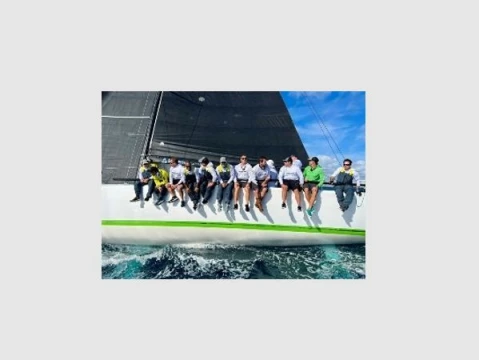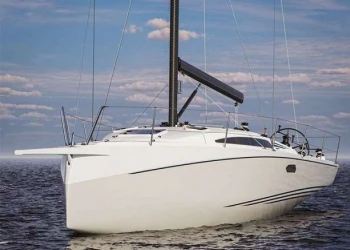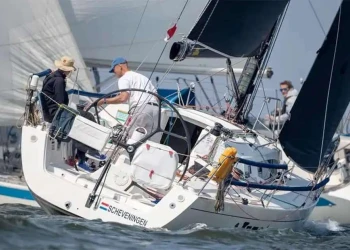
Hooligan overall winner of Lauderdale to Key West Race
Hooligan overall winner of Lauderdale to Key West Race
The third in the four-race Islands in the Stream series of the SORC was the Ft Lauderdale to Key West Race, a 160-mile journey south towards Miami, turning southwest and then west towards the finish at Key West. With marks of the course positioned along the Florida Keys, this classic race has the fleet hugging close to the islands and reefs to get relief from the strong Gulf Stream current that lies just offshore.
Weather for the race was also typical: a medium-strength south-southeasterly, forecasted to back to the east. This promised an upwind track towards the first mark, followed by close reaching and possibly running towards the finish. Accordingly race organizers chose the Predominant Downwind Medium course model for scoring.
However, the breeze never fully backed to the E-NE, and the fleet sailed at angles closer to being upwind and close-reaching than in this model, so the scoring was changed for the final results to Predominant Upwind Medium.
"This change made a slight re-ordering of results in ORC Class 1 and Class 2, but the consensus was this choice more accurately reflected the actual conditions on the course,” said PRO Chris Woolsey.
Had not for being OCS with a 30-minute penalty applied, the overall winner would have been Class 3 winner FC2, a Figaro 2 raced by the NEKA Sailing Team, so the top prize instead went to John Evans and Trey Sheehan’s TP52 HOOLIGAN, the first monohull to finish in 17H 28M 15S. With FC2 in second position, third place overall was won by Sledd Shelhorse’s Carkeek 40 MERIDIAN XI.
Matthew Schraedler’s J122 BLITZKRIEG won Class 2 in a tight contest where the top three in this class of 10 boats were separated by only 2 minutes in corrected time after 23 hours of racing.
The change in scoring choice illustrates an issue with race managers who on the one hand want to use the power of the ORC VPP for its accurate ratings based on weather conditions on the course, but may have a limited range of available course models to use. This is why ORC approved the development of an objective high resolution weather forecast-based system that can provide ratings specific to the race.







